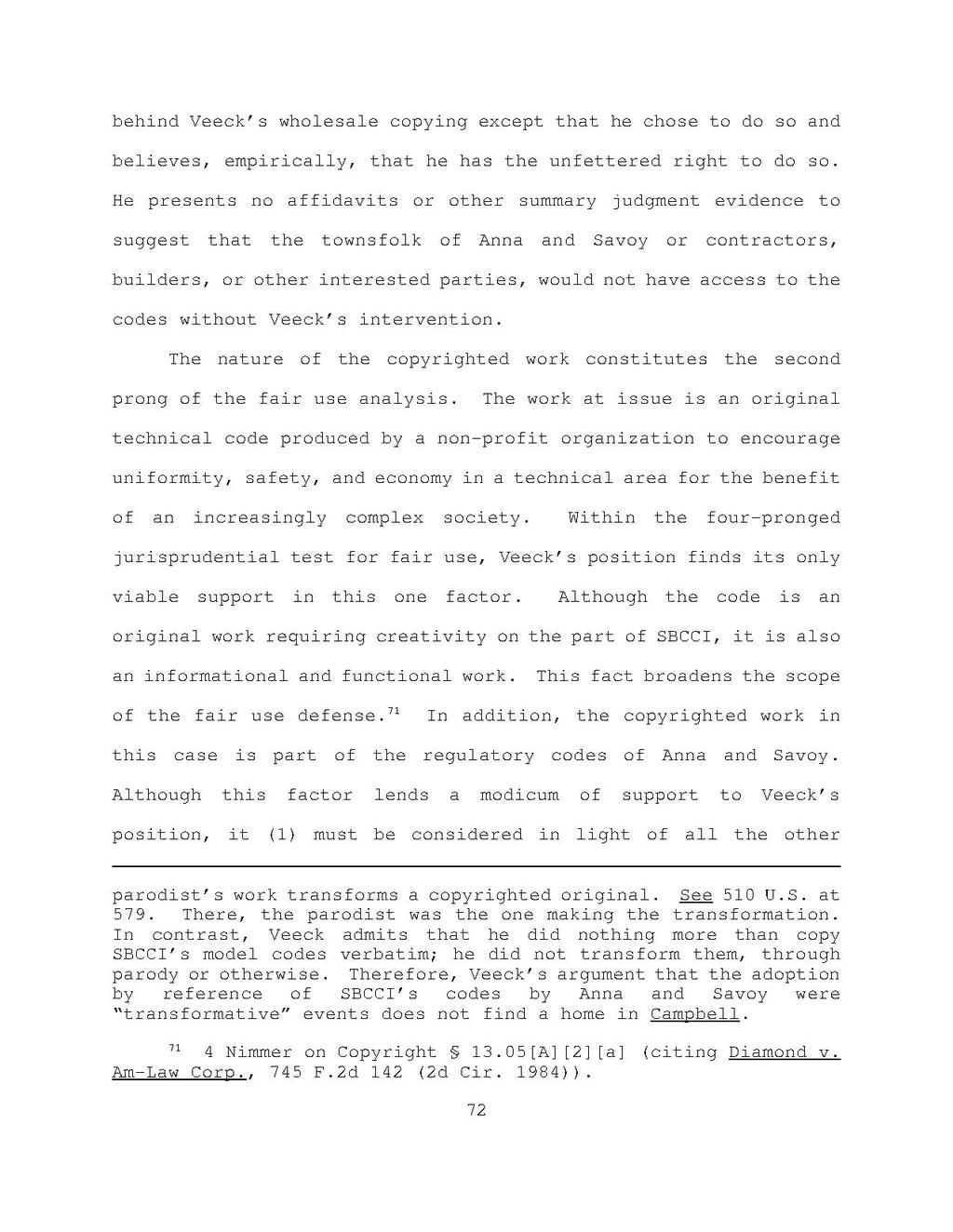behind Veeck's wholesale copying except that he chose to do so and believes, empirically, that he has the unfettered right to do so. He presents no affidavits or other summary judgment evidence to suggest that the townsfolk of Anna and Savoy or contractors, builders, or other interested parties, would not have access to the codes without Veeck's intervention.
The nature of the copyrighted work constitutes the second prong of the fair use analysis. The work at issue is an original technical code produced by a non-profit organization to encourage uniformity, safety, and economy in a technical area for the benefit of an increasingly complex society. Within the four-pronged jurisprudential test for fair use, Veeck's position finds its only viable support in this one factor. Although the code is an original work requiring creativity on the part of SBCCI, it is also an informational and functional work. This fact broadens the scope of the fair use defense.[1] In addition, the copyrighted work in this case is part of the regulatory codes of Anna and Savoy. Although this factor lends a modicum of support to Veeck's position, it (1) must be considered in light of all the other
- ↑ 4 Nimmer on Copyright § 13.05[A][2][a] (citing Diamond v. Am-Law Corp., 745 F.2d 142 (2d Cir. 1984)).
parodist's work transforms a copyrighted original. See 510 U.S. at 579. There, the parodist was the one making the transformation. In contrast, Veeck admits that he did nothing more than copy SBCCI's model codes verbatim; he did not transform them, through parody or otherwise. Therefore, Veeck's argument that the adoption by reference of SBCCI's codes by Anna and Savoy were "transformative" events does not find a home in Campbell.
72
